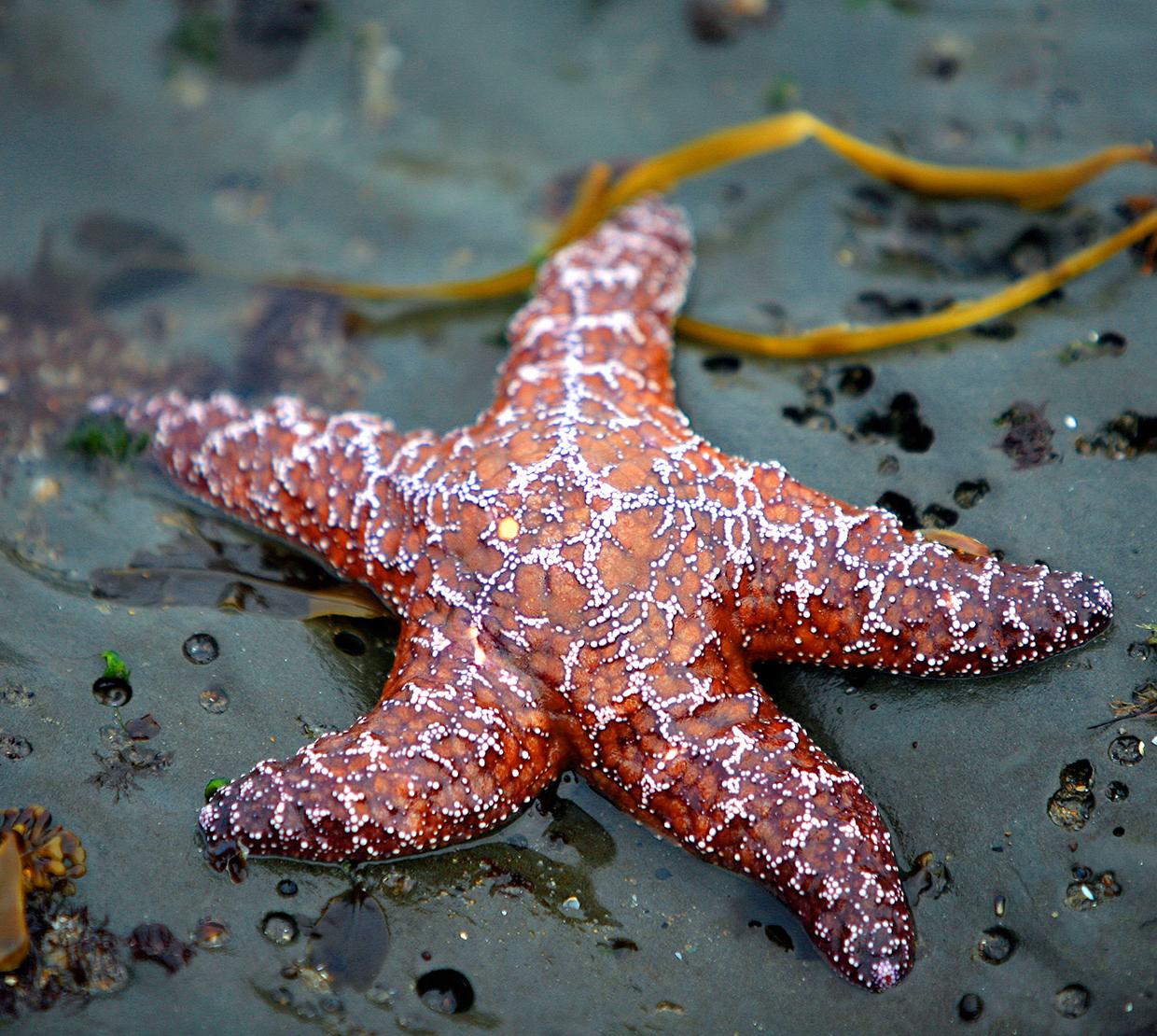The incidence of sea star wasting syndrome has exploded along the Oregon Coast and created an epidemic of historic magnitude, one that threatens to decimate the entire population of purple ochre sea stars. Prior to this, Oregon had been the only part of the West coast that had been largely spared this devastating disease.
The ochre sea star, which is the species most heavily affected by the disease in the intertidal zone, may be headed toward localized extinction in Oregon, according to researchers at OSU who have been monitoring the outbreak. As a “keystone” predator, its loss could disrupt the entire marine intertidal ecosystem.
Researchers say this is the first time that die-offs of sea stars, more commonly known as starfish, have ever been identified at one time along such a wide expanse of the West coast,
And the sudden increase in Oregon has been extraordinary.
“This is an unprecedented event,” said Bruce Menge, the Wayne and Gladys Valley Professor of Marine Biology in the College of Science.
“We’ve never seen anything of this magnitude before.
“We have no clue what’s causing this epidemic, how severe the damage might be or how long that damage might last,” he said. “It’s very serious. Some of the sea stars most heavily affected are keystone predators that influence the whole diversity of life in the intertidal zone.”
The best information is from the intertidal zone, which is easier to access for monitoring. In this area, less than 1 percent of the ochre sea stars in Oregon were affected in April, and only slightly more than that by mid-May.
Today, an estimated 30-50% of the Oregon populations of this sea star species in the intertidal zone have the disease. The highest losses are at Fogarty Creek, where about 60% are affected. Researchers project that the epidemic will intensify and, at some sites, nearly 100% of the ochre sea stars could die.
Colleagues from the Oregon Coast Aquarium are monitoring subtidal sites in Yaquina Bay, where wasting was first observed in April.
Altogether, mortality has been documented in 10 species of sea stars on the West Coast. No definitive cause has yet been identified, although it may be bacterial or viral pathogens. Researchers around the nation are working on the issue.
Sea star wasting syndrome is a traumatic process in which, over the course of a week or less, the sea stars begin to lose legs, disintegrate, ultimately die and rot. They sometimes physically tear their bodies apart. Various epidemics of the syndrome have been observed in the past, but none of this extent or severity.
In the past, some of the outbreaks were associated with warm-water conditions during El Nino events, but currently the water temperatures in Oregon “are only at the high end of a normal range,” Menge said.




